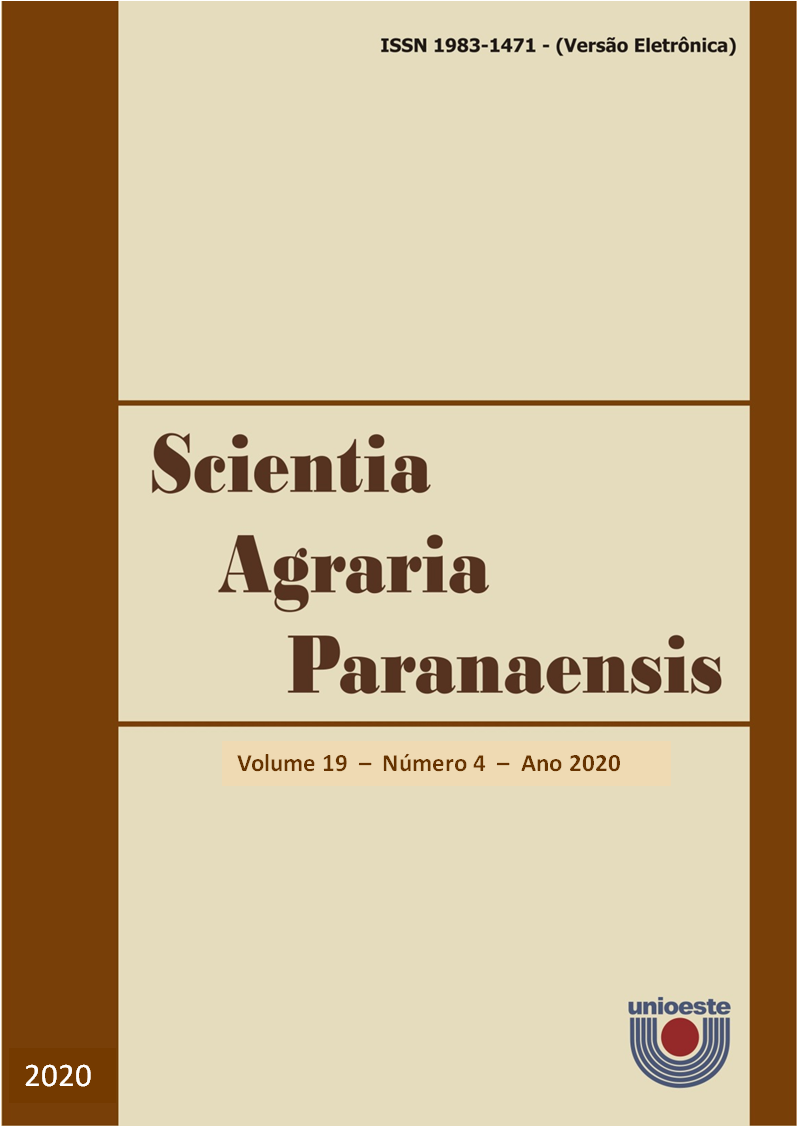Alternative suppression of Botrytis cinerea in strawberry using essential oils
DOI:
https://doi.org/10.18188/sap.v19i4.25103Resumo
Strawberry (Fragaria x ananassa) is a perishable fruit with a short post-harvest life and a high incidence of fungal diseases, especially Botrytis cinerea. For control and prevention, synthetic products are often used which negatively influence in the food and environmental security. The present work was carried out with the objective of evaluating the inhibitory potential of essential oils in the growth and control of the B. cinerea in vitro and in vivo. The essential oils of thyme (Thymus vulgares L.), cinnamon (Cinnamomum cassia L.), lemongrass (Cymbopogon flexuosus L.), peppermint (Mentha piperita L.) and tea tree (Melaleuca alternifolia Maiden & Betche) were tested, in addition to control made of autoclaved water, using a completely randomized design with 4 replications. The fungus growth was evaluated in vitro through grading. Strawberry fruits were evaluated for the presence of B. cinerea, firmness and total soluble solids content. The growth of the B. cinerea in vitro, the percentage of gray mold infection, the total soluble solids content and the texture of strawberry were evaluated. The in vitro growth of the fungus received lower scores with the essential oils of thyme and cinnamon, with values of 0.32 and 0.92, respectively, with greater suppression. The percentage of strawberry with symptoms were lower than the treatments with tea tree (8,33%), thyme (25%), lemongrass (25%) and peppermint (26,66%). The essential oils of thyme and cinnamon have potential for use in the control of the Botrytis cinerea in in vitro test and the essential oils of peppermint, thyme, tea tree and lemongrass have potential for use in the suppression in strawberry fruits.
Downloads
Publicado
Como Citar
Edição
Seção
Licença
Aviso de Direito Autoral Creative Commons
Política para Periódicos de Acesso Livre
Autores que publicam nesta revista concordam com os seguintes termos:
1. Autores mantém os direitos autorais e concedem à revista o direito de primeira publicação, com o trabalho simultaneamente licenciado sob a Licença Creative Commons Attribution que permite o compartilhamento do trabalho com reconhecimento da autoria e publicação inicial nesta revista.2. Autores têm autorização para assumir contratos adicionais separadamente, para distribuição não-exclusiva da versão do trabalho publicada nesta revista (ex.: publicar em repositório institucional ou como capítulo de livro), com reconhecimento de autoria e publicação inicial nesta revista.
3. Autores têm permissão e são estimulados a publicar e distribuir seu trabalho online (ex.: em repositórios institucionais ou na sua página pessoal) a qualquer ponto antes ou durante o processo editorial, já que isso pode gerar alterações produtivas, bem como aumentar o impacto e a citação do trabalho publicado (Veja O Efeito do Acesso Livre).
Licença Creative Commons
Esta obra está licenciada com uma Licença Creative Commons Atribuição-NãoComercial-CompartilhaIgual 4.0 Internacional, o que permite compartilhar, copiar, distribuir, exibir, reproduzir, a totalidade ou partes desde que não tenha objetivo comercial e sejam citados os autores e a fonte.


